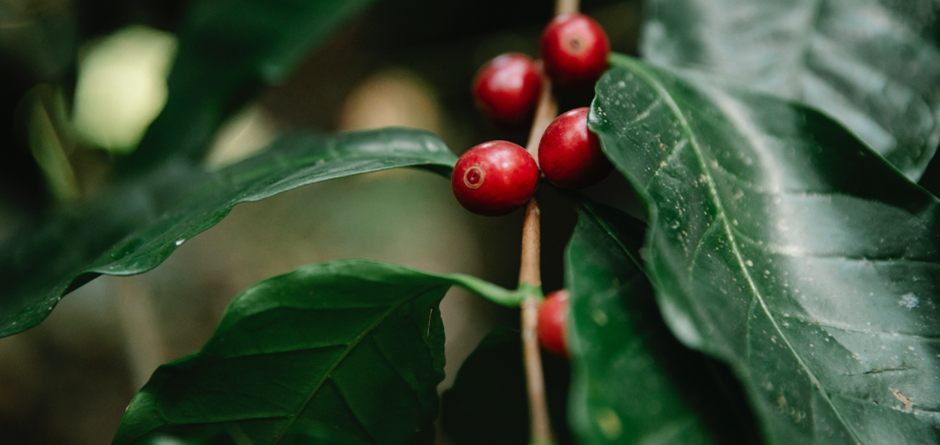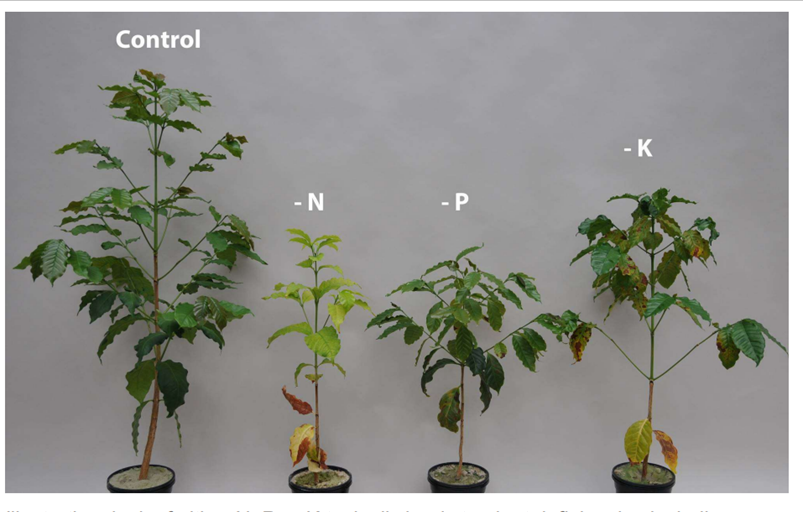Sustainable Plant Nutrient Management (SPNM): An overview

This post is also available in:
This post is also available in:
![]() polski (Polish)
polski (Polish)
What is SPNM, and why is it important?
Understanding Sustainable Plant Nutrient Management is important for many reasons. Too little knowledge about the use of plant nutrients contributes to significant problems with nutrition, food security, pollution, climate change, biodiversity loss, the need for farmland, and the economics of farmers and society. Sustainable nutrient management means durable solutions to these challenges fitted to local needs in time, without assuming how it should be done in each case (e.g., if water-soluble,” chemical” fertilizers should be used or not). Essential principles are to understand what is needed and when, to make it available to plants in a combination of cost-effective and safe ways, and to conserve and recycle nutrients well. The debate and often conflicting, oversimplified views on sustainable nutrient management are summarized in more detail in the introduction. In contrast, this article summarizes key facts about nutrient conservation, recycling, fertilizer, microorganisms, and nutrient element groups.
Nutrient conservation and cycling
It is essential to conserve the relatively nutrient-rich topsoil against loss of nutrients to water and air. Likewise, recycling is challenging but important for nutrients lost, eaten, grazed, or sold. The efforts may be fitted well into other practices and purposes like soil and water conservation, carbon capture, building soil organic matter and biological activity, energy saving, and perhaps weed and pest management.
Nutrient conservation includes conserving topsoil and reducing losses – particularly of nitrogen forms like the water-soluble gas ammonia (NH3), to air. Loses can also be from leaching (washing down), e.g., Nitrate (NO3–). Split application and catch crops can help improve the ability of plants to absorb nutrients. Nutrients can also be lost to or recycled from livestock, burning, or in farmers/urban toilets, and export. Phosphate can be lost from biologically available forms for a season or more by fixation to clay minerals.
Nutrient cycling. Recycling from grazed flood plains has been standard, as well as human waste and ashes. Sometimes, such recycling can be re-established in safe ways. Access to, Nitrogen (N)-rich material, for example, increases challenges with recycling nutrient-poor materials that can increase N-uptake from the soil by microorganisms using its carbon (C).
Organic fertilizers and manures typically contain microorganisms and remains of organisms. These include some readily water-soluble, mineralized forms (e.g., ammonium, ammonia, and soluble phosphates) also found in commercial fertilizers. Water-soluble micronutrient minerals may require dispensation from organic farming rules. Some biomass ashes and minerals releasing nutrients slowly (slow release), like rock phosphate, can also be permitted in certified organic farming and sometimes help.
Composting mixed types of organic materials can increase nutrient concentrations by removing C, as CO2, with access to oxygen (O2, aerobically) or methane (CH4) anaerobically).
It is essential to use organic manures when available, but the quality and amounts vary from excess to shortage. If enough amounts of good quality organic manure are available and used, it can supply the soil (and plants) with all nutrient elements. At the same time, it improves soil’s biological and physical properties, reduces acidity problems when aerated, and is used safely. However, organic manures may introduce new weed and pest species if not heated enough by the composting process. The nutrients may need to be released in better time (synchronized) well with crop demand, and knowledge is needed to estimate how much commercial fertilizer it replaces.
Nitrogen (N) – rich materials can be needed in addition to some plant residues (like straw) before mixing them into N-deficient soil. This is because such residues are very high in carbon – compared to nitrogen which also is needed by bacteria. Therefore, extra N is needed to avoid bacteria depleting N from N-poor soil to balance their high-carbon diet. Carbon concentration can also be reduced by composting. Respiration and release of the greenhouse gas CO2 into the air can also help high-carbon compost materials to reach a stable carbon-to-nitrogen ratio of 30:1 C: N or lower. The C:N ratio in manure should be lower to release N. E.g., it is not a problem on most Danish farms but in small, depleted farms mainly having maize stalks in Zimbabwe (pers. comm. Dr N E Nielsen and Dr Ken Giller respectively). Likewise, a too-high concentration of protein-binding tannins can be a problem e.g. for tree leaves.
Soil fertility stimulants are usually products claimed to improve soils or plant nutrition in ways other than fertilizers. Many products are sold or oversold as organic or biological soil improvers.
Some of these products are needed and suitable. They may e.g. be used well to introduce nitrogen-fixing bacteria for legumes with specific bacteria-needs like e.g. most soybean types have. That can be a problem when grown at new sites. Sometimes, bacteria products (inoculants) are needed, but they may not be marketed locally or suited to local soils. Other soil fertility stimulant products can effectively reduce Nitrogen loss as the strong greenhouse gas N2O from poorly aerated sites in soil high in N (denitrification inhibitors).
Some products may help much in laboratories with sterilized soils, but they may make little or no difference in outdoor soils with diverse plants, root pieces and a range of microorganisms.
Some products make no sense at all, but they are promoted as e.g. organic and/or nano “super boosters”.
Regulations in the EU and the USA are only starting and only in the EU, are defined as plant nutrition products (but other than fertilizers).
Diverse systems can help use nutrients of partly different types, depths, and times and contribute to beneficial microbial activities, soil- and water conservation, building soil organic matter, and recycling crop residues. These include growing different crops together (intercropping) with limited overlap (relay cropping) or growing trees with seasonal crops or pastures (agroforestry and tree-pasture systems called silvo-pastoral). Cover crops can fit in on the soil surface, and as catch crops take up remaining Nitrate, so it is not washed out (leached).
However, even if they differ and can benefit each other, plants also compete for nutrients, water, and light.
Fertilizers: Problems, solutions, and misunderstandings regarding sustainability
A summary of some key points:
1. Maintaining good crop growth and yield is often difficult without commercial fertilizers. Organic manure, biological nitrogen fixation (by species like beans), and soil- and water conservation are all important but not always enough to ensure high yields, good nutrient uptake, and product sale (e.g., from degraded or naturally infertile land). Access to organic manures or fodder from outside is small, and time and land areas are limited. Some farmers may build up soil nutrient levels with fertilizers before learning and gradually transitioning to productive, organic farming.
Other farmers may not need, want, or be able to buy fertilizer when starting to cultivate a crop. However, later, when they have more knowledge., capacity, and better access to suitable fertilizer and a reliable market, or if soils become depleted, they may change strategy and incorporate fertilization for some or all fields. Fake or diluted agrochemicals, fertilizers, or “wonder crop boosters” are still often sold in some regions.
2. Fertilizers can cause many problems – but solutions exist. Using fertilizer (as well as organic matter) can cause many problems for the soil, the plants, the environment, and in some cases, nutritional and crop quality if fertilizer is used without proper knowledge, care and regulations. However, such problems can be limited or avoided via education and by choosing the suitable types, doses, placements, timing, etc. For example, ammonium (NH4+) and urea-N fertilizers can acidify soils if not combined with lime or nitrate (NO3–) fertilizer. Not all fertilizer production requires much energy, and the production of nitrogen fertilizer with renewable energy is starting again by some companies. Needed fertilizer can increase CO2 capture by plants and even for legumes saving energy needed for fixing Nitrogen from the air if that is an advantage. Fertilizer is sometimes a competing method for other soil fertility methods or is oversold as the only method. However, it can also add value to other soil-conserving and improving methods (synergy or positive interaction).
3. Fertilizers can give more space for nature but pollute it. Fertilizer use can reduce the need for land for farming but also pollute the environment directly or via more livestock fodder, emission, dung, and urine.
4. Fertilizers require energy to be produced and transported, but they can promote carbon capture by plants if used well. Cargo ships use little energy compared to speeding ferry boats.
5. Phosphate is a limited resource, but most other raw materials for fertilizer are available nutrients available for many hundreds or thousands of years if traded internationally.
6. Fertilizers can reduce or increase the risk of crop failures, economic loss, or poor-quality products. It depends on knowledge and several other factors.
Soil and plant nutrient analysis can be relevant for farmers with or without fertilizer use. Particularly for fertilizer, farmers can select those nutrients which tests indicate are available at too low levels for adequate growth of various crops. Other methods can also be used to respond to particular deficiencies.
Microorganisms and nitrogen fixation are essential for plant nutrition – but sometimes they need help:
Microorganisms can only solve some plant nutrition problems. However, they can help with recycling and dissolving nutrients, extending the roots, and making Nitrogen from air useful, as summarized below:
Microbial and other amendments (supplements) can sometimes help. For example, for some new types of legumes (relatives of beans) with specific needs for nitrogen-fixing rhizobia bacteria. Also, microbe addition can help when using sterilized growth media, mined soils, or when transplanting plants without soil and few or no roots. Appropriate types of microbial inoculants may be hard to find and buy when needed (or transferring manure with them may make the real benefit). Recycling organic residues is also important, but they are bulky if they help in a field where tons of them may already be present. Small packages of “wonder stimulants” may be useless in a field if only organic matter is recycled. Fake marketing and products to farmers are common in developing countries, and the EU and USA are now first regulating “bio-stimulants,” and only the EU defines them as products for plant nutrition. Most nutrients can be found in almost anything organic, but some may be in forms or amounts not helping plants at all or at least cost-effectively – particularly if it is spread all over fields or crops.
- Promoting diverse and much plant cover in farming may be sufficient to get diverse microbiology and to build good organic matter. Also, adding fertile topsoil and surface plant litter on top of compost can help. Some recommend particular heat-tolerant earthworms for compost.
Mycorrhizal fungi act as important symbiotic (mutually beneficial) extensions of plant roots, but for most crops and herbs, shared types of endo-mycorrhizae (also found inside roots) can be found in soils with root residues. Direct-seeded plants can be colonized as they grow.
Local transfer from the field to the field of microorganisms is possible. They are essential to uptake poorly mobile Phosphorus (P) and Copper (Cu).
- Most species share several mycorrhizal species. The cabbage or species of the Cruciferae family do not have a symbiosis with them. In contrast, coniferous plants have specific needs (surface-covering ectomycorrhiza) important for new growth areas and nurseries.
- Nitrogen fixation from soil air. Most plants from the bean family (pea, legume, leguminous tree) can bind much Nitrogen from soil air (N2) into forms plants can use, like ammonium (NH4+), using much solar energy. Legumes will only use much energy (sugar) or nutrients on N-fixation if N is needed most. Therefore, it will only be important if they have enough of other growth-factors like Phosphorus and water. In general, the plant part nearest to the limiting factor (e.g., N or sugar) will use what it needs and grow, before the excess of it becomes available to other parts.
Some are trees with pods and flowers like those of beans (e.g., Gliricidia and Robina) or are hairy (incl. Acacia, Mimosa, Calliandra, and Leucaena). Alnus and Casuarina trees can fix N-nitrogen jointly (symbiotically) with special bacteria looking hairy like a fungus, Frankia (actinomycetes), and so can cyanobacteria (still often called “blue-green algae”), which are living in the water. Nitrogen fixation requires the availability of resources like water and phosphate. Some plant species will, at some sites, require symbiotic microorganisms to be introduced (inoculated) at new sites. Other challenges are the germination of wild legumes, multiplying enough and fitting them into other land uses, and the demand for nutrients. Standard and innovative solutions are suggested. Free-living soil bacteria can fix a small amount of Nitrogen (for example, 5-20 kg per hectare). See more in my article on Nitrogen.
Specific nutrients
Articles on specific nutrients will not be covered in this summary except when relevant as examples for important principles. The nutrients differ much, and specific knowledge cannot simply be replaced with general assumptions, beliefs, and ideologies. Under Nitrogen, some challenges and recent solutions for legumes are included. Ratios between nutrients matter, and some compete while others improve uptake of each other. E.g., a too-high ratio of Nitrogen (N) to Phosphorus (P) or N to Potassium (K) delays flowering (reproductive growth). It can also increase attacks by pests like aphids and diseases as protein content increases and structures weaken.
- The article on specific nutrients and plant and soil analysis and observations may help to focus on relevant nutrients. So can locally specific, local crop guidelines.

Figure 1. Healthy plant, and deficient in Nitrogen (-N), Phosphorus (-P, lower leaves small and dark in other cases purple), and Potassium (-K, see scorched edges). Macronutrients (N, P, K), Magnesium and Molybdenum deficiency first affect the older leaves. Permission: Yara Fertilizer Industry Handbook 2022.
See Figure 1 for typical nutrient deficiency symptoms of the macronutrients N, P and K. Plants can mobilize the nutrients needed from old to new leaves, buds, fruits, and shoots. These are macro (=primary) nutrients (N, P, and K) and one of the secondary nutrients – Magnesium (Mg). Their deficiency symptoms start at the lower leaves. Such symptoms starting on the younger leaves indicate micronutrient deficiency (except for Molybdenum) or starting deficiency of the secondary nutrients Calcium (Ca) or Sulphur (S). Micronutrients get less available when soils get less alkaline and more alkaline – again, except for Molybdenum- but can also have been washed out from old acid or sandy soils, bound to large organic molecules by the oxygen level in the soil. P-deficiency sometimes causes purple parts of lower leaves, but in this case, they are small and dark green. More can be found via the reference list and the articles by Mandal (2023) at WikiFarmer Library on specific nutrients and observations of needs.
However, guidelines for treating nutrient deficiencies can differ from case to case. Furthermore, recognizing the specific nutrient deficiency might be challenging due to other stress factors (like abiotic stresses, drought, or pests and diseases infections) masking the typical symptoms expected to be observed. Finally, the symptoms differ a bit in very young or old leaves.
References and suggested reading:
BigPictureAgriculture (2015): Plant Nutrient Deficiency Leaf Illustrations and Charts Reference Guide. https://bigpictureagriculture.blogspot.com/2015/12/plant-nutrient-deficiency-leaf.html
Diagnosis of Plant Nutritional Disorders — Department of Plant Science (psu.edu). Penn State College of Agricultural Science, seen 2023 The Pennsylvania State University
Mucheru-Muna M, Mugende D, Pypers P, Mugwe J, Kung’u J, Vanlauwe B, Merckx R. (2014): Enhancing maize productivity and profitability using organic inputs and mineral fertilizer in central Kenya small-holder farms. Experimental Agriculture, 50(2), 250-269. doi:10.1017/S0014479713000525
Mudombi-Rusinamhodzi G and Rusinamhodzi L (2022): Food sovereignty in sub-Saharan Africa: Reality, relevance, and practicality. Front. Agron. 4:957011. doi: 10.3389/fagro.2022.957011.
Reetz, HF (2016): Fertilizers and their Efficient Use. Publisher: IFA, Paris, 2016 Library (fertilizer.org)
See also detailed plant nutrition (or soil conservation) articles by Mandal (2023) here at Wikifarmer Library
Sustainable Plant Nutrient Management (SPNM): An overview
Sustainable Nutrient management: Introduction to concept, strategies, and principles
Nutrient conservation and cycling
Mineral fertilizers (including ash) and sustainability
Biological Nitrogen Fixation and seeding Legumes for Soil Fertility
The importance and management of Phosphorus (P) and Potassium (K) in plant production
Ion charges and secondary (=meso) nutrients: Calcium, Magnesium and Sulphur
How important are the Micronutrients for plants
Soil and plant analysis and field observations
When are approaches to Plant Nutrient Management actually Sustainable?








































































